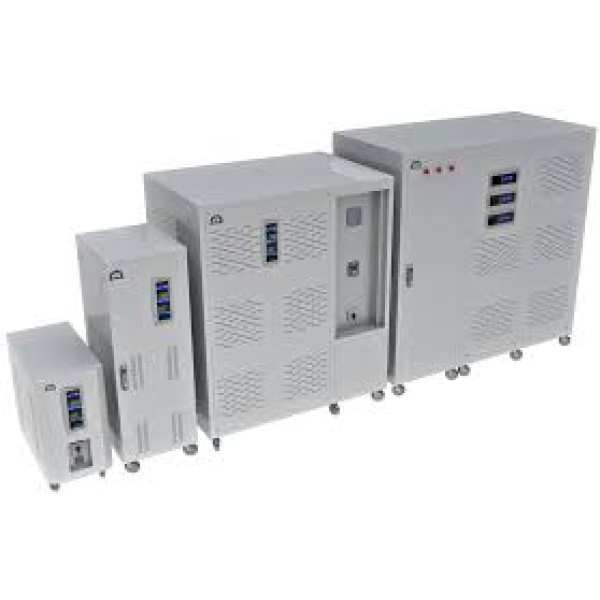Description
Rolling Contact Servo Stabilizers, specifically the linear type, represent a specialized category of servo voltage stabilizers designed for precise voltage regulation and stability in electrical power systems. These stabilizers utilize a rolling contact mechanism, often based on a servo motor and a sliding contact brush, to regulate the output voltage continuously. Here’s an overview of Rolling Contact Servo Stabilizers (linear type), including their features and applications:
Features:
- Linear Voltage Regulation: Rolling Contact Servo Stabilizers employ a linear voltage regulation mechanism, which involves adjusting the position of a sliding contact brush along the winding of an autotransformer or variable transformer. This allows for precise and continuous adjustment of the output voltage.
- High Precision: These stabilizers offer high precision voltage regulation, typically within a tight tolerance range, ensuring that the output voltage remains stable and consistent even under fluctuating input voltage conditions.
- Fast Response Time: They provide rapid response times, quickly detecting and correcting voltage fluctuations to maintain a stable output voltage, thereby protecting connected equipment from damage.
- Wide Input Voltage Range: Rolling Contact Servo Stabilizers can operate within a wide input voltage range, making them suitable for use in areas with fluctuating or unstable power supply.
- High Efficiency: They are designed for high efficiency, minimizing energy losses during voltage regulation and operation, which helps reduce overall electricity consumption and operating costs.
- Overload Protection: Many Rolling Contact Servo Stabilizers incorporate overload protection features to safeguard connected equipment from electrical faults, such as overcurrent and short circuits.
- Digital Control (Optional): Advanced models may feature digital control systems for precise voltage regulation, advanced monitoring, diagnostics, and remote control capabilities.
Applications:
- Industrial Applications: Rolling Contact Servo Stabilizers (linear type) are commonly used in industrial settings such as manufacturing plants, factories, and process industries to regulate voltage supply to critical machinery, production lines, and control systems.
- Commercial Establishments: They are installed in commercial buildings, including offices, shopping malls, hospitals, and hotels, to protect sensitive equipment, computers, servers, and other electronic devices from voltage fluctuations.
- Data Centers: Rolling Contact Servo Stabilizers are essential in data centers and server rooms to ensure a stable and reliable power supply for uninterrupted operation of IT infrastructure and critical systems.
- Telecommunication Infrastructure: They are utilized in telecommunication facilities, including mobile network base stations, data centers, and switching centers, to maintain a stable voltage supply for communication equipment and systems.
- Utility Substations and Power Plants: Rolling Contact Servo Stabilizers play a vital role in utility substations and power generation plants to stabilize voltage supply, improve grid stability, and protect electrical infrastructure.
Benefits:
- Equipment Protection: They protect sensitive electrical and electronic equipment from damage caused by voltage fluctuations, extending their lifespan and reducing maintenance costs.
- Improved Equipment Performance: Rolling Contact Servo Stabilizers optimize the performance and reliability of equipment by maintaining a stable output voltage, reducing the risk of malfunctions and downtime.
- Energy Efficiency: By optimizing voltage levels and reducing energy waste, they contribute to improved energy efficiency and lower electricity consumption.
- Reduced Downtime: Their fast response times and continuous voltage regulation help minimize downtime by ensuring uninterrupted power supply to critical equipment and systems.
Overall, Rolling Contact Servo Stabilizers (linear type) offer precise and reliable voltage regulation, making them essential for maintaining a stable and consistent electrical supply in various applications, particularly in industrial, commercial, and critical infrastructure settings.





